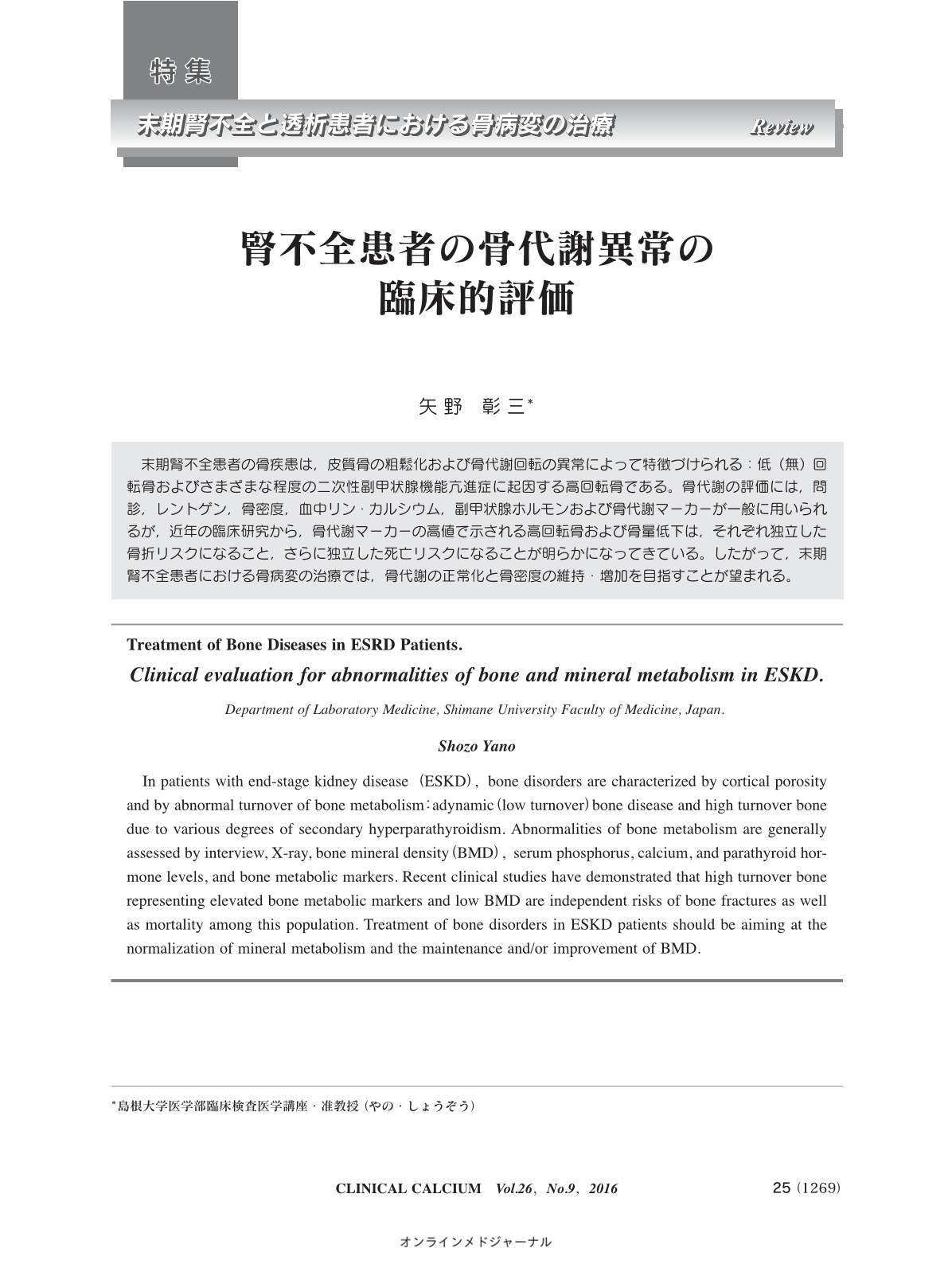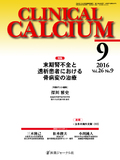Japanese
English
- 有料閲覧
- Abstract 文献概要
- 1ページ目 Look Inside
- 参考文献 Reference
末期腎不全患者の骨疾患は,皮質骨の粗鬆化および骨代謝回転の異常によって特徴づけられる:低(無)回転骨およびさまざまな程度の二次性副甲状腺機能亢進症に起因する高回転骨である。骨代謝の評価には,問診,レントゲン,骨密度,血中リン・カルシウム,副甲状腺ホルモンおよび骨代謝マーカーが一般に用いられるが,近年の臨床研究から,骨代謝マーカーの高値で示される高回転骨および骨量低下は,それぞれ独立した骨折リスクになること,さらに独立した死亡リスクになることが明らかになってきている。したがって,末期腎不全患者における骨病変の治療では,骨代謝の正常化と骨密度の維持・増加を目指すことが望まれる。
In patients with end-stage kidney disease(ESKD), bone disorders are characterized by cortical porosity and by abnormal turnover of bone metabolism:adynamic(low turnover)bone disease and high turnover bone due to various degrees of secondary hyperparathyroidism. Abnormalities of bone metabolism are generally assessed by interview, X-ray, bone mineral density(BMD), serum phosphorus, calcium, and parathyroid hormone levels, and bone metabolic markers. Recent clinical studies have demonstrated that high turnover bone representing elevated bone metabolic markers and low BMD are independent risks of bone fractures as well as mortality among this population. Treatment of bone disorders in ESKD patients should be aiming at the normalization of mineral metabolism and the maintenance and/or improvement of BMD.



